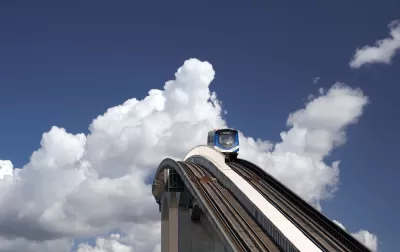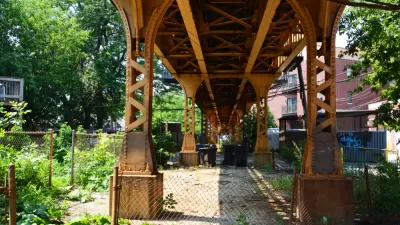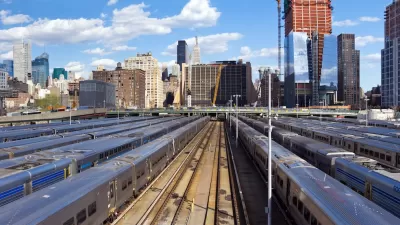In its efforts to build a more environmentally sustainable region by prioritizing transit and transit-oriented development, cities in the Vancouver region also create displacement risks for people who already use and depend on transit.

Christopher Cheung reports on the tradeoffs included in the Vancouver region's ongoing development of new housing along transit routes: the demolition and replacement of old rental buildings "home to vulnerable communities who depend on transit for work."
The question pondered in the article: Do trains really need to cause pain for renters?
According to Cheung, some of the municipalities in the region have responded to the threat of displacement by updating policies to help renters, with "a mix of everything from requiring landlords to offer cash compensation to offering renters a unit in the redeveloped building."
Advocates, however, are pushing for more, suggesting that the province of British Columbia should tweak its Residential Tenancy Act. One potential change that could alleviate the threat of displacement, according to the article would be "to require landlords to allow tenants to return to a comparable unit in the redeveloped building, at the same or similar rent they were paying before," writes Cheung.
More data on the housing market of the region, and the existing demographics of housing along transit routes, are included in the article. The article chooses the city of Burnaby as its primary case study, with the experience of one renter in particular providing a human-interest angle for the story.
FULL STORY: Transit Gain Doesn’t Have to Equal Renter Pain

Alabama: Trump Terminates Settlements for Black Communities Harmed By Raw Sewage
Trump deemed the landmark civil rights agreement “illegal DEI and environmental justice policy.”

Planetizen Federal Action Tracker
A weekly monitor of how Trump’s orders and actions are impacting planners and planning in America.

Why Should We Subsidize Public Transportation?
Many public transit agencies face financial stress due to rising costs, declining fare revenue, and declining subsidies. Transit advocates must provide a strong business case for increasing public transit funding.

Understanding Road Diets
An explainer from Momentum highlights the advantages of reducing vehicle lanes in favor of more bike, transit, and pedestrian infrastructure.

New California Law Regulates Warehouse Pollution
A new law tightens building and emissions regulations for large distribution warehouses to mitigate air pollution and traffic in surrounding communities.

Phoenix Announces Opening Date for Light Rail Extension
The South Central extension will connect South Phoenix to downtown and other major hubs starting on June 7.
Urban Design for Planners 1: Software Tools
This six-course series explores essential urban design concepts using open source software and equips planners with the tools they need to participate fully in the urban design process.
Planning for Universal Design
Learn the tools for implementing Universal Design in planning regulations.
Caltrans
Smith Gee Studio
Institute for Housing and Urban Development Studies (IHS)
City of Grandview
Harvard GSD Executive Education
Toledo-Lucas County Plan Commissions
Salt Lake City
NYU Wagner Graduate School of Public Service





























